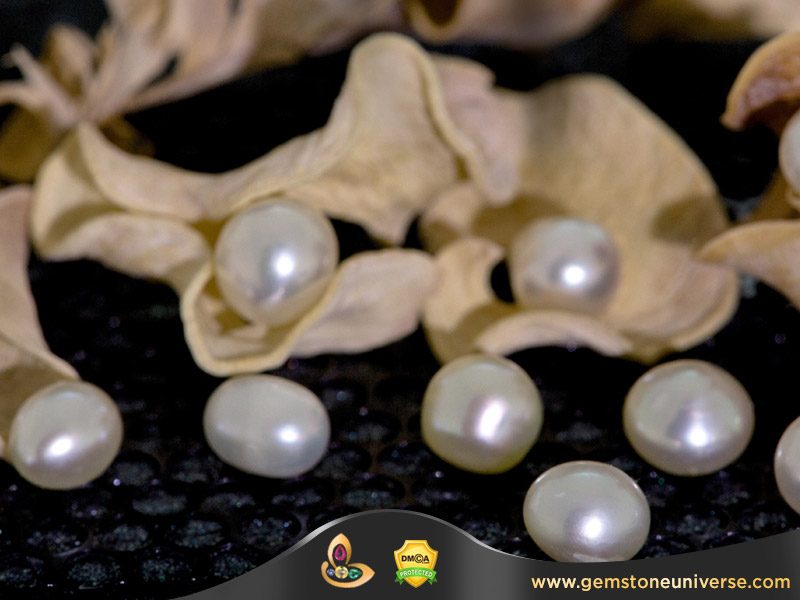ARTICLES: Burmese Pearl Benefits | Burmese Pearl Price per Ratti

Clicking on Underlined Links will give more information about a topic. You can always come back to this page
What Problems Can Astrology & Jyotish Gemstones Solve? Can they solve My Unique problems
Which is the Best Gemstone Choosing Method | Which Gemstone Should I wear
Do Gems Work- No They Don’t for 90% of the People-Why?.
What results Can I expect from Jyotish Gemstones?
In Quest of India’s Best Gemstone Astrologer.
Tell me My Best Life Changing Gemstone
I have heard and recommended to wear a Burmese Pearl as these are of superior Quality - 100% incorrect statement with full potential for failure of Gem therapy. Things we don’t like series- But this will help you avoid the pitfalls.
Burma Pearl,Burmese pearl ,Myanmar Pearl are they effective for Astrology
A Rare Mother of Pearl exhibit from the Gemstoneuniverse.com collection of Fine Natural Gemstones
Burmese Pearl
Today we got an interesting demand on phone from a client who asked for Burmese pearl and said that I have heard from someone that Burmese Pearl is of superior quality. Our answer was just straightforward please get a radiography report for the Pearl stating that it is fully non nucleated and natural pearl formed from Nacre.
For planetary gem therapy purposes the Pearl has to be fully Natural go get any kind of results for the Moon.
Please click on the link below to get details about What is a Natural Pearl:
http://www.p-g-a.org/pearls.html
A Pearl that does not satisfy the criteria given on the page above is a bluff pearl and should be avoided for Astrological purposes.
Coming back to Burmese Pearl, the way consultants try to do a hard sell for bluff goods is really shameful. We try very hard in service of Planetary Gemmology to ensure that gem therapy does not get a bad name due to a few bad eggs. But such things have the potential to defeat our purpose.
Please note that the Gem therapy if implemented properly never fails and gives the best results among all methods of remedies. Some of the factors listed below lead to poor results in the field of Planetary Gemmology:
- Ill informed clients who do not check references of consultants.
- Incorrect statements such as the title of this write up.
- Lack of certification.
- Confused mind.
More details about Gem Therapy failures can be found at the link below which has Guruji Shrii Arnav’s enlightening article:
http://www.gemstoneuniverse.com/gemsdontwork.php
- Misnomers such as Bala’s ruby and incorrect assessment of charts.
So what’s the story of Burmese Pearl:
Buy Pearl Stone Online in India
What has happened to the famed Burmese pearls?
The famed gold and silver pearls of Burma (now Myanmar ) are grown in the Andaman Sea that surrounds the unspoiled islands of the Myeik (formely Mergui) Archipelago off the south eastern coastline of Myanmar .
Today, Myanmar (Burmese) pearls are available either as bead nucleated cultured pearls, or as very rare natural baroque pearls. By far the most coveted of Myanmar pearls are those pearls of golden color whose nacre has a distinctively rose overtone.
Note: These are not Natural Pearls
"A Brief History"
British colonists engaged in diving for natural pearls in the waters off the Myeik Archipelago as early as 1891. After Burma gained independence from Britain , around 1950, a Japanese-owned company engaged divers to search for natural pearls. These were sold in international markets for very high prices. As these natural pearls soon became very popular, Burmese pearls began a reputation as being one of the world's finest varieties. One reason for this popularity was that 40 percent of these pearls were of a golden rose color, unlike those from Indonesia , Australia and the Philippines , which are generally more silvery or yellow in color.
The pearling industry was eventually nationalized under the socialist regime of General Ne Win, and attempts were made to develop a strictly Burmese cultured pearl industry. However, by 1988 this endeavor had not been economically successful, so the then military government decided to embrace a free market philosophy. By 1996 foreign pearling companies began investing in Myanmar in joint ventures with companies from Myanmar . The first was the Thai joint venture company Andaman Pearl Co. Others presently engaged in pearl culture include locally owned Myanmar Pearl Enterprises, Orient Pearl Co, and Niino Co, as well as a Japanese joint venture Myanmar Tasaki Co and the Australian joint venture Myanmar Atlantic Pearl Co. Due to the depletion of natural stock of the gold-lipped pearl oyster (pinctada maxima), the current pearl cultivation industry in Myanmar is based on mature 2 year old stock reared by spat culture.
How pearls are produced?
Dr Thant Thaw Kaung, General Manager of Myanmar Atlantic Pearl Co provided the following description of modern pearl cultivation in Myanmar in an interview with Dr Sien Tu that was published on www.myanmar.com
Carefully selected P. Maxima, harvested from the waters of the Myeik Archipelago are allowed to spawn in the laboratory from January to May. Twenty females and six males are placed together in each water tank. When the temperature is suddenly increased the male oysters release sperm and the females ova into the water. These seek each other out and become larvae that attach themselves to knotted ropes that are let down into the water of onshore tanks. After 45 days the ropes are raised and placed in panels that are located in ocean water leased by the company. This area is declared out of bounds to fishermen and unauthorized ships and boats, and this order is enforced by the Myanmar Navy.
By the end of their second year of growth, the oysters are about 10cm across and ready for seeding with MOP nucleus and mantle tissue from a sacrifice oyster. Japanese technicians generally have to be hired; they are the best in the world and can seed up to 600 oysters a day. And their success rate of 80 percent is phenomenal; of every 100 oysters they seed, 80 will produce pearls.
By the end of their fourth year of life the oysters are harvested. The shells are reopened and the pearl extracted; and while it is still open you can immediately insert another nucleus. This process can be repeated two or three times during the oyster's life, after which it has grown too old and is released in the ocean to begin life anew as a wild oyster. (Remember, the citizens of Myanmar are Buddhists; so they will not kill the oyster to get at its pearl).
The GM continued:'Our main base of operation is at Escape Bay , located about 70 miles from Myeik. We have over 100 employees. The Australian managers at the Pearl farm and skilled Japanese technicians have been training Myanmar workers in all aspects of the job with no reservations about transfer of technology and Myanmars are fast acquiring technical expertise in pearl farming. Two of our workers are now as skilled ad Japanese technicians in surgical seeding of oysters.
We have been very successful in marketing our pearls locally at the Nandawun sales outlet in Yangon because our customers know that all the pearls traded at the Center come from our own Pearl farm. Furthermore they know that our pearls are untreated, natural pearls. This is very important in marketing. The demand for Myanmar pearls has outstripped the supply, with the result that unscrupulous traders are importing cheap foreign pearls and dyeing them to get a golden color. The dye fades in about a year?s time and the pearls become yellow. But before this happens, they enjoy a brisk sale among those who cannot tell the difference between natural and treated pearls. We guarantee that our pearls are untreated and undyed and customers have come to accept our word.
Myanmar Atlantic had invested millions of dollars in the project. For the first five years money was poured in without any returns. But now the investment has paid off and in the usual course of events we can expect to sit back and reap the profits.
However, there was a worldwide glut or oversupply of pearls and prices declined. In 1988, one mome (equivalent to 20.625 ratis) fetched US$500. During this period of recession it was all we could do to get US$100 to US$150.
The main reason for this is the economic doldrums that has for the past three years depressed consumer spending in Japan , the world's largest pearl market, and this has led to a reduced demand for pearls from traditional Japanese customers. But recently the Japanese economy has been showing signs of an economic upturn and this will, hopefully, result in a resurgence of trade in the pearl industry.
Current status.
Recent estimates suggest that Myanmar currently produces 42 kan (0.15 tons) of bead nucleated cultured pearls that have an average diameter of 10mm. These pearls are sold at periodic Myanmar Gems Emporiums that re held in Yangon , or in the local market.
Welcome back the Burmese (Myanmar) cultured pearl. However, I wonder what portion of this industry survived the tsunami of late December 2004.
Graham Brown
Gemmology Queensland Volume 6 / No.4 / April 2005
The above article can be found at the website of AIGS. Thank you, Graham Brown
for this excellent factual article. We hope nobody will ask a Burmese Pearl from us again.
You can access this article on the web by clicking here.
Fully Natural Astrological Pearls can be found at the link below:
http://www.gemstoneuniverse.com/index.php?cPath=2_6
Our Take:
Burmese or no Burmese insist on a Radiography report and in case you cannot do a Natural Pearl, leave Planetary Gem Therapy and try something else!
© Gemstoneuniverse.com, All rights reserved.

http://www.gemstoneuniverse.com
Gemstoneuniverse-The Gold Standard in Planetary Gemology
Clicking on Underlined Links will give more information about a topic. You can always come back to this page
What Problems Can Astrology & Jyotish Gemstones Solve? Can they solve My Unique problems
Which is the Best Gemstone Choosing Method | Which Gemstone Should I wear
Do Gems Work- No They Don’t for 90% of the People-Why?.
What results Can I expect from Jyotish Gemstones?


